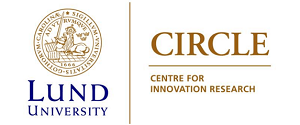No 2008/7: The Swedish Paradox arises in Fast-Growing Sectors
Olof Ejermo () and Astrid Kander ()
Additional contact information
Olof Ejermo: CIRCLE, Lund University, Postal: PO Box 117, Sölvegatan 16, SE-22100 Lund, Sweden
Astrid Kander: CIRCLE, Lund University, Postal: PO Box 117, Sölvegatan 16, SE-22100 Lund, Sweden
Abstract: The aim of this paper is to examine whether the previously observed gap between growth of R&D and economic performance, known as the ‘Swedish paradox’, is a general phenomenon across all sectors of the economy, or only occurs in specific industry segments. The dataset used for the analysis covers nearly the entire Swedish economy 1985-1998, divided into five broad sectors: Fast-growing industries, Slow-growing industries, Industrial outphasers, Fast- growing producer services and Other services. The growth of R&D, value added and research productivity is compared for these sectors and the largest gap between R&D and value added is located to the fast growing sectors of the economy. The Swedish paradox is therefore not necessarily a sign of weakness or deficiency of the innovation system, but rather indicates that long-term growth requires large investments in knowledge-building resources.
Keywords: Swedish paradox; sectors; R&D; research productivity; economic growth.
JEL-codes: O30
34 pages, June 1, 2008
Full text files
200807_Ejermo_et_al.pdf
Questions (including download problems) about the papers in this series should be directed to Torben Schubert ()
Report other problems with accessing this service to Sune Karlsson ().
RePEc:hhs:lucirc:2008_007This page generated on 2024-09-13 22:16:04.

